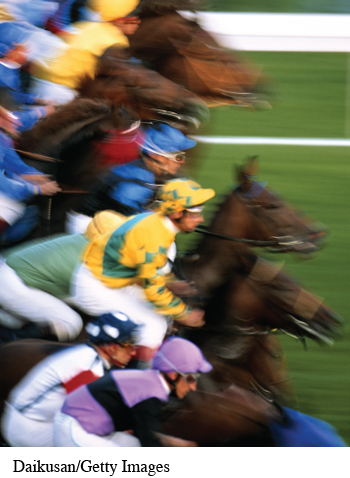Simulation
19
Simulation

CASE STUDY In a horse race, the starting position can affect the outcome. It is advantageous to have a starting position that is near the inside of the track. To ensure fairness, starting position is determined by a random draw before the race. All positions are equally likely, so no horse has an advantage.
During the summer and autumn of 2007, the members of the Ohio Racing Commission noticed that one trainer appeared to have an unusually good run of luck. In 35 races, the horses of this trainer received one of the three inner positions 30 times. The number of horses in a race ranges from 6 to 10, but most of the time the number of entries is 9. Thus, for most races the chance of getting one of the three inside positions is 1-in-3.
The Ohio Racing Commission believed that the trainer’s run of luck was too good to be true. A mathematician can show that the chance of receiving one of the three inside positions at least 30 times in 35 races is very small. The Ohio Racing Commission, therefore, suspected that cheating had occurred. But the trainer had entered horses in nearly 1000 races over several years. Perhaps it was inevitable that, at some time over the course of these nearly 1000 races, the trainer would have a string of 35 races in which he received one of the three inside positions at least 30 times. It came to the attention of the Ohio Racing Commission only because it was one of those seemingly surprising coincidences discussed in Chapter 17. Perhaps the accusation of cheating was unfounded.
Calculating the probability that in a sequence of 1000 races with varying numbers of horses, there would occur a string of 35 consecutive races in which one would receive one of the three inside positions at least 30 times is very difficult. How to go about determining this probability is the subject of this chapter. By the end of the chapter, you will be able to describe how to find this probability.